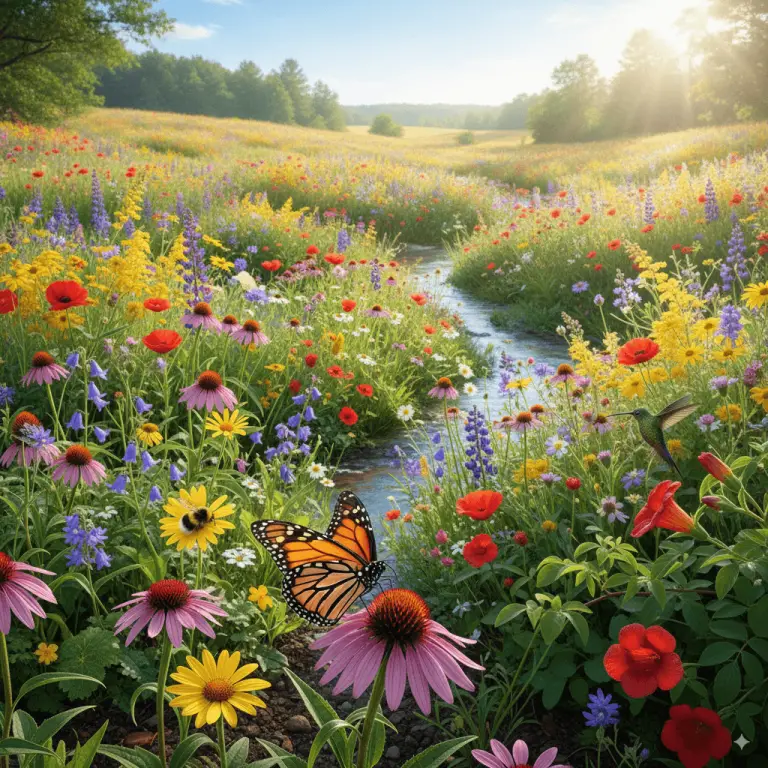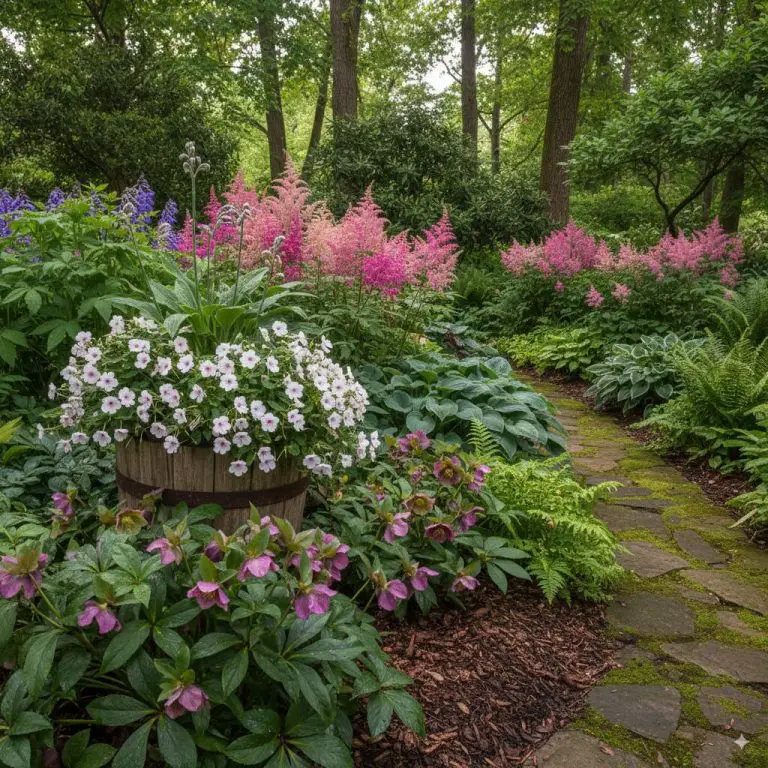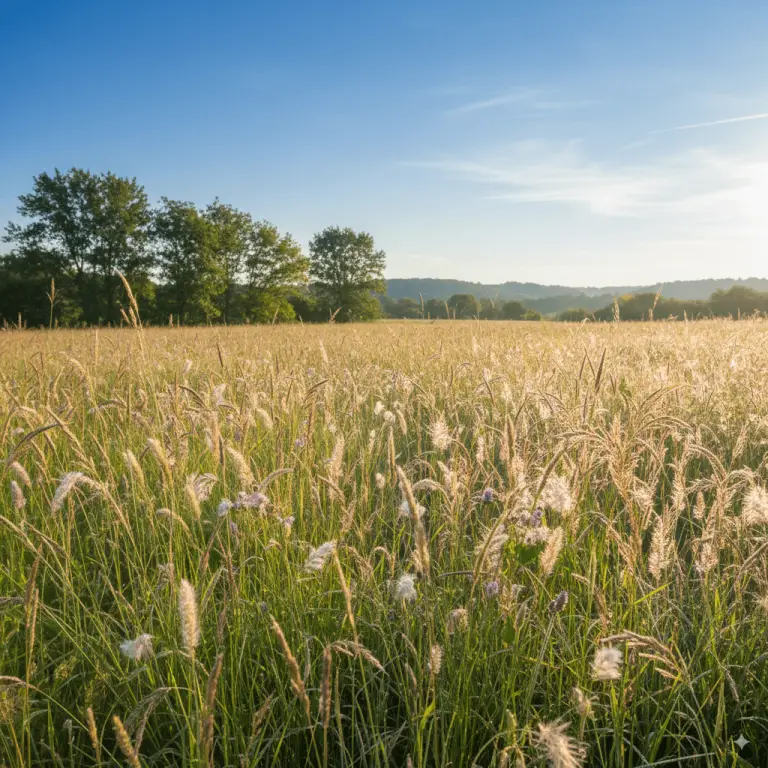Winter Flowering Plants For Planters – Your Expert Guide
Does your patio look a little gray and forgotten once the first frost hits? It’s a common sight for many gardeners: vibrant summer containers give way to empty pots and a feeling that the gardening season is over until spring.
But I’m here to promise you that your container garden can be just as joyful and colorful in January as it is in July. The secret lies in choosing the right plants—tough, beautiful, and ready to shine through the chill.
In this complete guide, we’ll unlock the secrets to a stunning cold-season display. We’ll explore the very best winter flowering plants for planters, walk through a step-by-step planting process, and share insider tips to keep your containers thriving all season long. Get ready to transform your winter landscape!
What's On the Page
- 1 The Surprising Benefits of Winter Flowering Plants for Planters
- 2 Our Top 10 Winter-Hardy Flowers for Stunning Planters
- 3 Your Step-by-Step Winter Flowering Plants for Planters Guide
- 4 The Ultimate Winter Flowering Plants for Planters Care Guide
- 5 Solving Common Problems with Winter Flowering Plants for Planters
- 6 Sustainable and Eco-Friendly Winter Planters
- 7 Frequently Asked Questions About Winter Flowering Plants for Planters
- 8 Your Winter Garden Awaits!
The Surprising Benefits of Winter Flowering Plants for Planters
Before we dive into the “how-to,” let’s talk about the “why.” You might be surprised by the incredible value a few well-placed winter containers can bring. It’s about more than just a splash of color.
Here are some of the key benefits of winter flowering plants for planters:

🌿 The Companion Planting & Gardening Book (eBook)
Bigger harvests, fewer pests — natural pairings & simple layouts. $2.40
Get – $2.40
🪴 The Pest-Free Indoor Garden (eBook)
DIY sprays & soil tips for bug-free houseplants. $1.99
Get – $1.99- Curb Appeal Boost: Cheerful containers by your front door create a warm, welcoming entrance, even on the coldest days. They show that your home is cared for and loved, year-round.
- Mood Enhancement: Seeing life and color during the grayest months can genuinely lift your spirits. It’s a small but powerful reminder of nature’s resilience and beauty.
- Wildlife Support: Early-emerging pollinators, like brave winter bees, will thank you! Flowers like Winter Heath and Hellebores provide a crucial, early-season source of nectar when little else is available. This is a core part of creating eco-friendly winter flowering plants for planters.
- Low-Maintenance Joy: Winter plants are generally slow-growing and require far less water and attention than their summer counterparts. It’s all the reward with a fraction of the work!
Our Top 10 Winter-Hardy Flowers for Stunning Planters
Ready for the fun part? Here are my tried-and-true favorites that have proven their mettle in my own winter containers year after year. Don’t worry—these flowers are perfect for beginners and seasoned gardeners alike!
1. Pansies and Violas (Viola x wittrockiana, Viola tricolor)
These are the undisputed champions of winter color. Modern pansies and violas are incredibly cold-hardy. They may flatten in a hard freeze, but they almost always bounce right back as soon as the sun comes out. Their cheerful faces come in every color imaginable.
2. Winter-Flowering Heather (Erica carnea)
For texture and long-lasting color, nothing beats Winter Heath. Its tiny, bell-shaped flowers in shades of pink, white, and purple last for months. It’s a fantastic, low-growing “filler” plant that provides a wonderful evergreen backdrop.
3. Hellebores (Helleborus niger, H. orientalis)
Also known as Christmas Rose or Lenten Rose, Hellebores are the elegant stars of the winter garden. Their nodding, cup-shaped flowers are incredibly resilient to frost. They are a bit of an investment, but they are perennials that will come back year after year.
4. Cyclamen (Cyclamen persicum, C. coum)
Hardy Cyclamen are jewels. Their delicate, swept-back petals in shades of pink, red, and white rise above stunning, often silver-marbled foliage. They do best in a slightly sheltered spot, away from the harshest winds and rain.
5. Ornamental Cabbage and Kale (Brassica oleracea)
While they don’t technically “flower” in the traditional sense, the vibrant rosettes of ornamental cabbage and kale provide incredible structure and color. The cold actually intensifies their deep purple, pink, and creamy white hues. They are workhorses that look good until late winter.
6. Winter Jasmine (Jasminum nudiflorum)
Looking for a “spiller”? Winter Jasmine is a fantastic choice. This trailing shrub produces bright yellow, star-shaped flowers on bare green stems throughout the winter. It will cascade beautifully over the edge of a large planter.
7. Snowdrops (Galanthus nivalis)
For a touch of pure, simple elegance, you can’t beat Snowdrops. Plant the bulbs in autumn at the base of other plants in your container. Their delicate, nodding white flowers are often the very first sign that spring is on its way.
8. Winter Aconite (Eranthis hyemalis)
Like a tiny pool of sunshine, Winter Aconite brings a brilliant splash of yellow. These tuberous perennials pop up in late winter, creating a cheerful carpet of color. They pair beautifully with Snowdrops.
9. Skimmia Japonica
Skimmia is a fabulous evergreen shrub for containers. Female plants produce tight clusters of vibrant red berries that last all winter, while male plants have fragrant flower buds. For berries, you’ll need a female variety like ‘Nymans’ and a nearby male like ‘Rubella’.
10. English Primrose (Primula vulgaris)
In late winter, English Primroses begin to push up their delicate, buttery-yellow flowers. They are a classic sign of the changing seasons and provide a much-needed pop of color as winter begins to fade.
Your Step-by-Step Winter Flowering Plants for Planters Guide
Knowing how to winter flowering plants for planters is just as important as choosing the right ones. Follow these best practices for a container that thrives.
Step 1: Choose the Right Planter
Your container is your plant’s home, and in winter, it needs to be tough. Avoid thin plastic or terracotta, which can crack in a freeze-thaw cycle. Opt for frost-proof materials like:
- Fiberglass
- Thick, high-fired ceramic
- Metal (with good drainage)
- Wood or composite materials
Most importantly, ensure your planter has drainage holes. Waterlogged soil is the number one enemy of container plants in winter.
Step 2: Use the Perfect Potting Mix
Don’t reuse old, compacted soil from summer containers. Start fresh with a high-quality, peat-free potting mix. For winter, I like to amend it with a few handfuls of horticultural grit or perlite. This improves drainage, which is absolutely critical to prevent roots from sitting in cold, wet soil and rotting.
Step 3: Plant Your Winter Container Masterpiece
I always use the classic “Thrill, Fill, Spill” design method. It’s a simple recipe for a balanced, professional-looking container.
- Thrill: Choose one tall, upright plant for the center to create height and drama. An evergreen like a small conifer or Skimmia works perfectly.
- Fill: Surround your “thriller” with mounding plants. This is where your Pansies, Cyclamen, and Heather come in. Pack them in a bit more tightly than you would in summer, as they won’t grow as quickly.
- Spill: Add trailing plants around the edge to soften the look and cascade over the sides. Trailing Ivy is a classic, but Winter Jasmine is a fantastic flowering option.
After planting, water everything in well to help the soil settle around the roots.
The Ultimate Winter Flowering Plants for Planters Care Guide
Once planted, your winter containers are surprisingly low-maintenance. This simple winter flowering plants for planters care guide will see you through.
Watering: The Golden Rule
This is the most important part: do not overwater. Winter soil dries out very slowly. Before watering, stick your finger about an inch into the soil. If it feels dry, it’s time to water. If it feels damp, leave it alone. Always water in the morning on a milder day to allow the plants to absorb it before temperatures drop at night.
Feeding and Fertilizing
It’s simple: don’t. The plants are growing so slowly that they don’t need extra nutrients. Fertilizing can encourage weak, leggy growth that is more susceptible to frost damage. Save the plant food for spring.
Deadheading for More Blooms
Regularly pinch off the spent flowers on your Pansies, Violas, and Primroses. This little task, called deadheading, encourages the plant to produce more flowers instead of putting energy into making seeds.
Solving Common Problems with Winter Flowering Plants for Planters
Even the hardiest plants can face challenges. Here’s how to troubleshoot some common problems with winter flowering plants for planters.
Help, My Plants Look Limp and Waterlogged!
This is almost always a sign of poor drainage. First, stop watering! If the pot feels very heavy, gently tip it on its side to allow excess water to drain away. Ensure the drainage holes aren’t blocked. In the future, remember to check the soil moisture before reaching for the watering can.
Frost Damage: What to Do
If a hard, unexpected frost zaps your plants, don’t panic. Wait for the weather to warm up. Often, plants like Pansies will perk right back up. If some leaves or flowers have turned to mush, simply prune them off to keep the plant tidy and prevent rot.
Pests and Diseases in Winter
Pests are rare in the cold, but slugs can sometimes be an issue during mild, damp spells. Keep an eye out for them. The biggest disease risk is root rot from overwatering, which is why proper drainage and watering technique are so vital.
Sustainable and Eco-Friendly Winter Planters
Creating a beautiful winter display can also be kind to the planet. Here are a few tips for more sustainable winter flowering plants for planters.
- Go Peat-Free: Choose a peat-free compost. Peat bogs are vital carbon sinks, and using alternatives helps protect these precious habitats.
- Reuse and Repurpose: Use evergreen cuttings from your own garden (like holly, ivy, or fir) to add free, festive texture to your pots.
- Choose Perennials: Incorporate perennials like Hellebores, Skimmia, and evergreen grasses. They will form the backbone of your planter year after year, reducing waste and saving you money.
Frequently Asked Questions About Winter Flowering Plants for Planters
Can container plants survive winter?
Absolutely! The key is choosing the right plants—those rated for your climate zone or even one zone colder, as plants in pots are more exposed than those in the ground. Providing excellent drainage and using frost-proof pots are also crucial for their survival.
How do I protect my planters from extreme cold?
During a severe cold snap, you can give your pots extra protection. Move them to a more sheltered spot against the house or a wall. You can also wrap the pot (not the plant) in burlap or bubble wrap to insulate the roots from the harshest temperatures.
When should I plant my winter containers?
The best time to plant is in early to mid-autumn. This gives the plants several weeks to establish a healthy root system before the really cold weather sets in. This head start makes them much more resilient to frost and winter conditions.
Your Winter Garden Awaits!
There you have it—everything you need to banish the winter blues and create stunning, vibrant containers that will bring you joy all season long. From tough-as-nails Pansies to elegant Hellebores, there’s a world of color waiting for you.
Remember the key winter flowering plants for planters tips: choose frost-proof pots, prioritize drainage, and be mindful with your watering. More than anything, have fun with it! Experiment with different combinations and textures.
Go forth and plant a little happiness for the winter months. Your patio will thank you for it!
- Conifers For Small Gardens – Your Ultimate Guide To Year-Round Beauty - December 10, 2025
- Shade Conifer Trees – Cultivating Evergreen Splendor In Tricky Garden - December 10, 2025
- Conifer Flowers – Unveiling Their Hidden Beauty And How To Cultivate A - December 10, 2025



